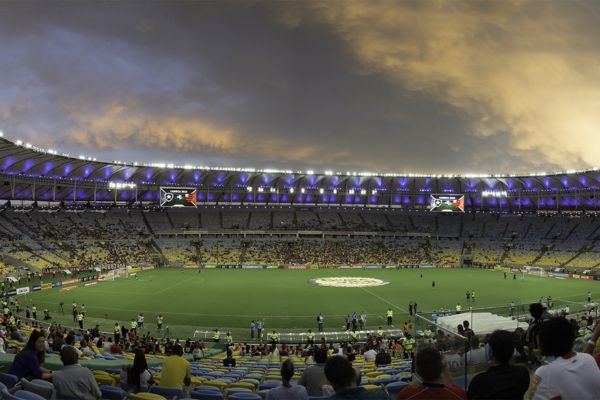On July 16, 1950, nearly 200,000 fans packed into the Maracanã, expecting to witness the crowning of Brazil as world champions. The streets of Rio were already celebrating, confident that their team would defeat Uruguay in the World Cup final. But what happened next sent shockwaves through the nation. A 2-1 defeat, later dubbed the Maracanazo, silenced the crowd and left Brazil reeling. It was more than just a loss—it was a national tragedy, one that led to Brazil abandoning their white shirts in favor of the now-iconic yellow and blue kit. To learn more about the story behind this iconic transformation and how Brazil’s footballing identity was reshaped, visit our page on How Brazil Got it's Colours.
A Stage for Football’s Biggest Moments
The Maracanã was built for that 1950 World Cup, designed to be the grandest football stadium on Earth. And while that final didn’t go to plan for Brazil, the stadium remained at the heart of the sport. In 2014, it had a chance to rewrite history, hosting another World Cup final—this time featuring Germany and Argentina. Lionel Messi tried to cement his legacy there, but it was Mario Götze’s extra-time goal that secured the trophy for Germany.
Beyond the World Cup, the Maracanã has hosted the Copa Libertadores final, South America’s most prestigious club competition, and served as the setting for unforgettable moments, including Pelé’s 1,000th career goal in 1969. The stadium isn’t just about football, either—it was also the centerpiece of the 2016 Rio Olympics, hosting both the opening and closing ceremonies.
The Home of Rio’s Fiercest Rivalry
If you really want to feel the soul of the Maracanã, you need to experience a Fla-Flu derby. Flamengo and Fluminense, two of Rio’s biggest clubs, call the stadium home, and when they face off, the atmosphere is something else. The stands are a sea of red, black, green, and white, with fans singing, chanting, and waving massive flags. It’s pure football passion, Brazilian style.
Flamengo, with one of the largest fanbases in the world, regularly fills the stadium, especially for high-stakes matches. Fluminense, one of Brazil’s oldest clubs, shares the ground, and their meetings are a fixture of Brazilian football history.
Renovations, Controversies, and a Changing Stadium

Over the decades, the Maracanã has seen major renovations. Originally built to hold nearly 200,000 fans, safety regulations and modern upgrades have reduced its capacity to around 78,000. While this has improved comfort and security, not all changes have been welcomed. Leading up to the 2014 World Cup and 2016 Olympics, entire communities were displaced to make way for stadium improvements—a move that sparked protests and criticism.
The Maracanã has also had its share of tragedy. In 1992, a section of the upper stand collapsed during a Flamengo vs. Botafogo match, killing three people and injuring dozens more. That disaster forced the stadium to undergo structural reviews and further safety upgrades.
The Magic of the Maracanã
Despite the changes, one thing has remained the same—the Maracanã is still one of the greatest football arenas in the world. Whether it’s a World Cup final, a Fla-Flu derby, or a packed Libertadores clash, the stadium pulses with an energy you can feel in your bones. The songs, the fireworks, the sheer emotion—it’s what makes this place more than just a stadium.
For football fans, a visit to the Maracanã isn’t just about watching a game. It’s about stepping into history, standing in the same spot where legends played, and feeling the echoes of some of football’s most unforgettable moments.
